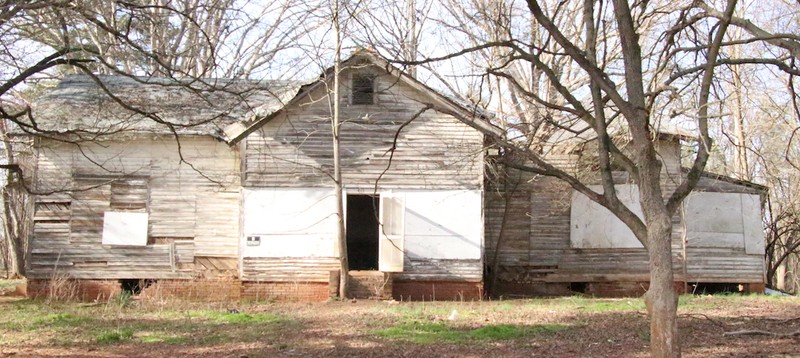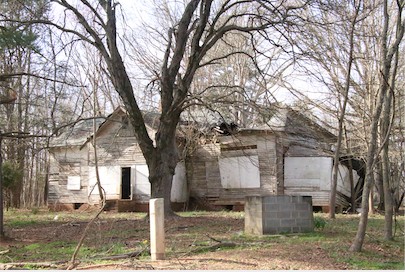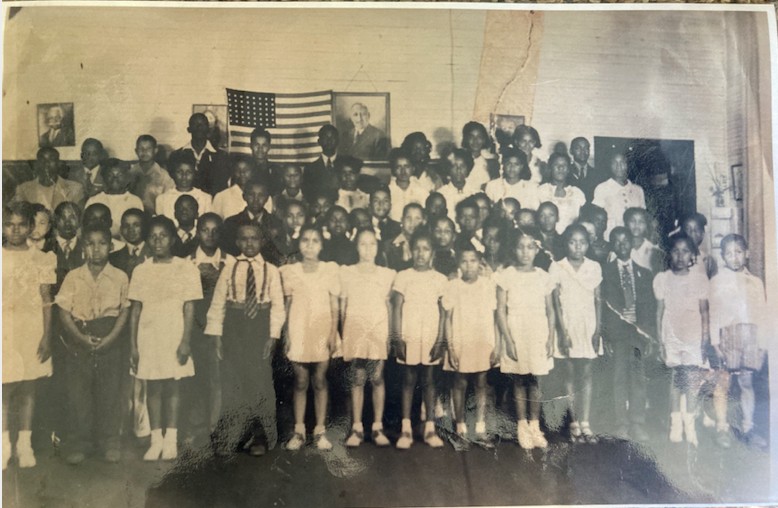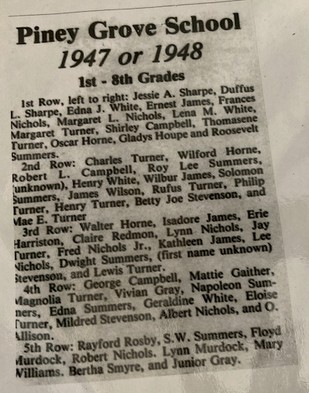Piney Grove Rosenwald School
Introduction
Text-to-speech Audio
Images
Front view of Piney Grove Rosenwald from March 2020

Side view of Piney Grove Rosenwald from March 2020

This picture was taken in 1948 or 1949, it includes all students from 1st-8th grade

Accompanying class roster for previous picture

Backstory and Context
Text-to-speech Audio
While the funds provided by Julius Rosenwald were critical, without the work of local benefactors, this school and hundreds of others would have never been constructed. On February 28, 1933, Piney Grove paid tribute to three special benefactors that contributed to their school's growth: Dr. F.B. Gaither, Mary Charlton Holliday, and Uncle Bynum Patterson.
Dr. Gaither was a member of the Iredell County School Board. He worked to acquire education for Blacks within the county. Mary Charlton Holliday was the first supervisor of negro schools (Jeanes Supervisor) in Iredell County. Under the leadership of Mrs. Holliday, schools gained better facilities and better educational tools. Uncle Bynum Patterson, a former Georgia railroad worker, was the president of the Parent-Teacher Association. They were honored with portraits that adorned Piney Grove’s walls.
Educating the whole child was important at Piney Grove. Along with traditional subjects such as Arithmetic, Reading, and Writing, students learned citizenship. During a 1933 conference of Black teachers, a teacher from Piney Grove presented her plan to teach citizenship. The principal from Piney Grove discussed how important citizenship education was schoolwide. It was evident that the trend of focusing on the whole child continued into the 1950s. In 1951, Piney Grove held a program on children’s spiritual growth in the home, church, and school. The foundational skills learned at Piney Grove were not forgotten, even after the school closed in 1952.
After closing, Piney Grove was listed as one of four abandoned school houses listed for sale in 1953. The total cost for the school was $550. Ira Johnson purchased the school for $950. As of 2017, the property is listed on the North Carolina National Register of Historic Places study list.
Sources
“Notice Of Sale Of Real Property".Record & Landmark (Statesville, NC), December 4th,1969.
“Group Works to Renovate Community Center".Record & Landmark (Statesville, NC), February 18th, 2020.
Genealogical Society of Iredell County, The Heritage of Iredell County, NC : vol. II, 2000.Statesville, N.C. : Genealogical Society of Iredell County, 2000. 69
Fisk University, “Rosenwald Database,” http://rosenwald.fisk.edu, accessed November 28th, 2020.
“Piney Grove School Honors 3 Persons”.Record & Landmark (Statesville, NC), February 28, 1933.
“Mary C. Holliday, an Iredell education pioneer”.Record & Landmark (Statesville, NC), February 26, 2012.
“Colored Teachers have a Good Meeting”.Record & Landmark (Statesville, NC), March 22, 1932.
“Piney Grove Has A Program on Child’s Spiritual Growth.” Record & Landmark (Statesville, NC), January 26, 1953.
“School Property Said Surplus Sold At Auction”.Record & Landmark (Statesville, NC), January 26, 1953.
Image taken by Phyllis Bailey
Image taken by Phyllis Bailey
Phyllis Bailey Collection
Phyllis Bailey Collection
